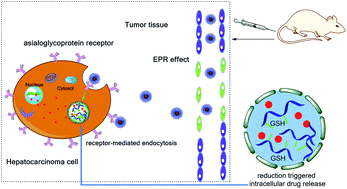Reduction breakable cholesteryl pullulan nanoparticles for targeted hepatocellular carcinoma chemotherapy
Abstract
In this study, a novel nanoparticulate drug delivery platform with inherent targeting ability to hepatic carcinoma cells and reduction-triggered drug release property was developed based on reducible cholesterol-modified pullulan (rCHP). The nanoparticle characteristics and antitumor effects were investigated in vitro and in vivo. The results revealed that drug-loaded rCHP nanoparticles were spherical and their diameter ranged between 80 and 160 nm with a change of molecular structure and drug loading content. rCHP nanoparticles with pullulan shells could anchor to human hepatocellular carcinoma cells (HepG2) due to specific recognition of asialoglycoprotein receptors (ASGPRs) overexpressing at the cytomembrane, reduction-sensitively release doxorubicin (DOX) in tumor cells, and effectively suppress the growth of HepG2 in vitro. In a hepatoma-bearing nude mouse model, attributed to their uncharged pullulan surface layer, the nanoparticles efficiently accumulated in the tumor site and were internalized by tumor cells. After cellular uptake, DOX release triggered by the reductive circumstance of tumor cells was achieved benefiting from the reduction-sensitive DOX release property. These nanoparticles showed significantly better antitumor effect and biosafety than DOX·HCl in the nude mice bearing hepatocellular carcinoma tumor.


 Please wait while we load your content...
Please wait while we load your content...